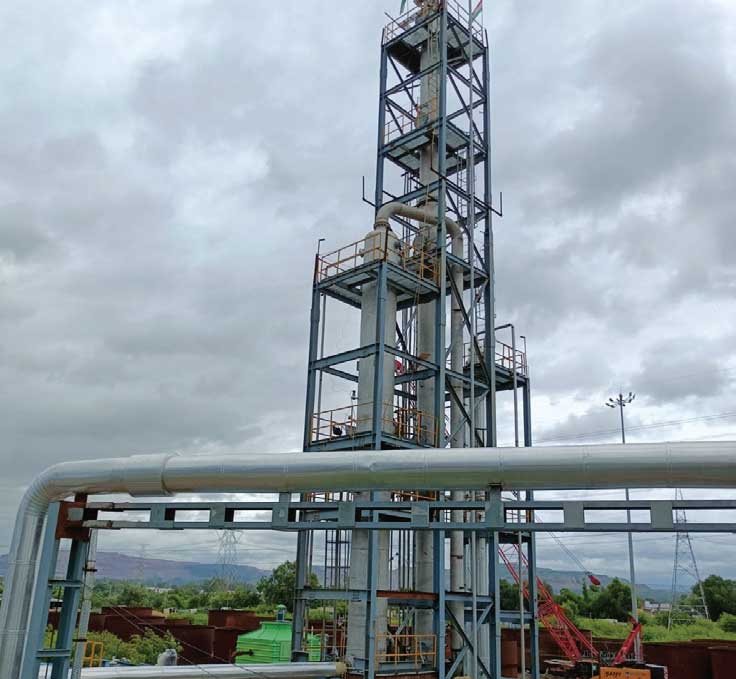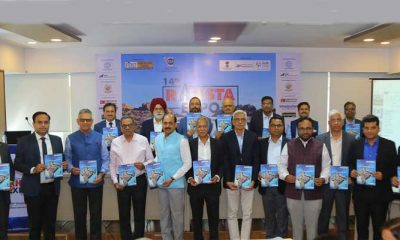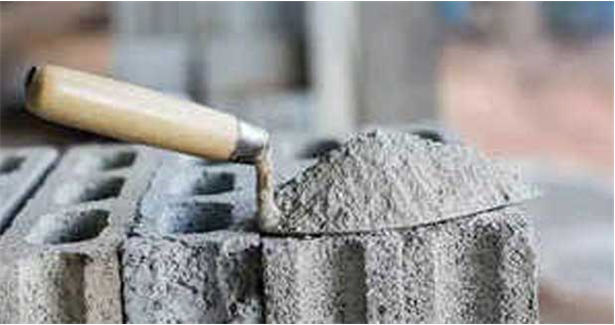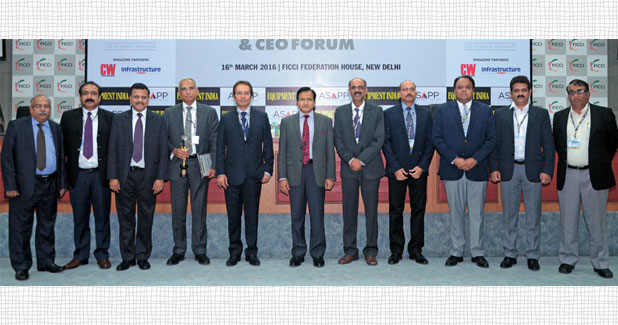Product development
Concretisation of roads: A path of durability and strength
Published
12 years agoon
By
admin
Concrete roads offer several distinct advantages over roads with bituminous surfaces. With barely 2 percent of the country’s road length constructed from concrete, there is tremendous scope for enhancing the durability and strength of roads through concretisation. A look at the technological advancements in concrete technology and the present scenario in IndiaThe importance of concrete roads can be gauged when one travels on the Mumbai-Pune Expressway which was built of concrete in the early nineties. Prior to that, people would travel on the old Mumbai-Pune road which was rugged, uncomfortable and would take a lot of time. However, with the opening of the Mumbai-Pune Expressway, time taken to traverse the distance has reduced, there is a saving of fuel and there is less wear and tear of vehicles due to the strong surface of the road, leading to lesser resistance.Case for concrete roads:In a vast country like India with a large geographical area and extreme weather patterns, the roads need to be built with a material which does not suffer from the frailties exhibited by bitumen. The material should be in a position to withstand pressure from petroleum and oil spillage, abrasion, high axle loads, aggressive pollutants and high traffic densities. It has been proved through technical studies in India and the world, that concrete roads satisfy all the aforementioned conditions. Commenting on the advantages of concrete roads over bituminous surfaces, Dr LR Kadiyali, CEO of LR Kadiyali & Associates stated, "roads made from concrete are practically maintenance free. They are comparable in initial cost to a flexible pavement on a new road with heavy traffic and cheaper on a life-cycle basis. It leads to a 15 percent saving of diesel in the case of commercial vehicles and a 10 percent saving in electricity for street lighting. Concrete roads ensure a better performance under conditions of heavy rainfall and water logging." Usage of concrete roads leads to a saving of around 40 percent in stone aggregates.Since the structural capacity in rigid pavements is ensured by the slab itself, the maintenance expenditure incurred on concrete roads is relatively low. New techniques and technologically advanced equipment have ensured that concrete roads are easy to build. There are lesser traffic disruptions as concrete roads remain maintenance free for a longer period. Concrete road surfaces offer better skid resistance and are not impacted due to water and the bad effects of oil and lubricant spillage.Elaborating on the advantages of concrete roads, Prof M.S.Shetty, Founder Chairman of the Pune Chapter of the Indian Concrete Institute (ICI) noted, "though the initial cost of making a concrete road is higher as compared to a bituminous road, it has a shelf life of around 25-30 years with minor repairs. The cost of concrete roads is lesser in the long term."Concretisation of roads also ensures savings in fuel consumption. It has been shown through trials undertaken by the Central Road Research Institute (CRRI) that around 15-20 % less fuel is consumed by goods carriers on concrete roads as compared to bituminous roads. Wear and tear for vehicle tyres, suspensions and shock absorbers is reduced.Through the application of life cycle cost analysis, one can deduce that the cost of concrete roads can match those of flexible pavements within 10 years. Though the initial cost of building a concrete road is higher, the scales begin to tilt in favour of concrete roads within a period of 5-10 years. In this time gap, flexible pavements require repairs to enhance their longevity. The life cycle cost of concrete roads becomes cheaper by 10-15 percent over a period of 20 years as compared to bituminous roads. Utilisation of fly-ash based blended cements enhances the cost competitiveness of concrete pavements.Concrete roads in India :The earliest example of a concrete road in India is Mumbai’s famous landmark Marine Drive which was constructed in 1939. This stretch of road is the most apt example of the durability and strength exhibited by concrete surfaces. There has scarcely been a day when Marine Drive was closed for repairs or maintenance. This seafront road has displayed resilience even seven decades after its construction.Commenting on the construction of concrete pavements in India, Dr L R Kadiyali stated, "around 2000 kms of concrete pavements have been constructed under the National Highway Association of India (NHAI) project. Other concrete road projects include the Mumbai-Pune Expressway which is around 100 kms and the Taj Expressway which is around 120 kms. All the concrete roads constructed are performing well."Elucidating on the construction of concrete roads in Mumbai, Mumbai Metropolitan Regional development Authority (MMRDA) Joint Project Director, Dilip Kawathkar stated, "a classic example of a concrete road is the Santacruz-Chembur Link Road (SCLR). It is expected to be completed by December 2012. The road will be a double decker flyover almost 6.5 km long. It will comprise of a 6 lane concrete road with a 3 metre wide footpath."Some prominent concrete roads in India includes the new carriageway of Delhi-Mathura road in Haryana/UP, it is 111 kms long and comprises of a new 2 lane carriageway in concrete, the Satara-Kolhapur section of NH-4 in Maharashtra is 133 kms long and has a new 2 lane carriageway in concrete, a 30 percent fly ash replacement has been used in the construction of the carriageway, the Yamuna Expressway is 165 kms long and has a new 2X4 lane carriageway in concrete under construction, the Khaga-Varanasi section of NH-2 in UP is 202 kms long and has a new 2 lane carriageway in concrete.Bitumen:In India, the material long preferred for road laying has been bitumen, a by- product of the petroleum industry. However, bituminous surfaces suffer from certain disadvantages. It rapidly deteriorates due to climatic conditions and rapid wear and tear. The most common signs of the drawbacks of bitumen roads are potholes. Bituminous surfaces also suffer on account of impact by water, oxidation, sunlight, spillage by petroleum and lubricants. The roads are also pressured by over laden vehicles such as heavy trucks and buses.Technological advancement:Road building in India has witnessed a tremendous technological advancement over the last few years. The pace of road construction has been accelerated alongwith an improvement in the quality of roads. This has been possible due to the evolution of advanced technology and sophisticated equipment. The use of Ready Mix Cement (RMC) has also led to the revolutionizing of road building. The major advantages accrued on account of the use of RMC are long term savings and faster construction. It also eliminates the disadvantages of hand mixed concrete which is dependent on traditional labour.Commenting on the latest technological developments in the construction of concrete roads, Dr Kadiyali stated, "developments in the construction of concrete roads comprise of continuously reinforced concrete pavement, which eliminates joints and whisper concrete which reduces noise levels. High volume fly-ash concrete has replaced cement by around 50 percent. Technological developments also comprise of manufacture of high strength concrete thro-ugh use of additives like silica fumes and white topping."The construction of concrete roads has become not only speedier but also economical through the deployment of different technological inputs. Elucidating on this aspect, Prof.Shetty stated, "one metre per minute of concrete road can be constructed in a day through what is known as the horizontal slip form technique. In this technique, used for pavement and traffic separation walls, concrete is laid down, vibrated, worked and settled in place while the form itself slowly moves ahead. This technique was used in the Delhi-Mathura road in 1992-93." The horizontal slip forming method finds its origin in the construction of interstate highways initiated by the Eisenhower administration in the USA during the 1950s.The Way Forward:Indigenous research on various aspects of concrete road design should be taken up. The performance of concrete roads already constructed should be monitored and any deficiencies observed should be identified. State public works departments (PWDs) should take up concrete road projects on the state highways just as the Central govt. is taking up projects on the national highways. The cement industry may fund a few pilot projects of white-topping in cities.A well developed and technologically advanced road network is absolutely essential to maintain and enhance the progress of a rapidly advancing economy like India. The building of a well heeled and efficient road system will result in the transportation and distribution of various goods and services across the country which is geographically vast and diverse. The utilisation of concrete in roads will not only ensure a long term investment in a strengthened road network but also lead to rapid economic progress.Cohesion needs to be maintained between the central and state governments as well as different organisations in order to ensure that a certain standard and quality of roads is maintained.
You may like

Advertising or branding is never about driving sales. It’s about creating brand awareness and recall. It’s about conveying the core values of your brand to your consumers. In this context, why is branding important for cement companies? As far as the customers are concerned cement is simply cement. It is precisely for this reason that branding, marketing and advertising of cement becomes crucial. Since the customer is unable to differentiate between the shades of grey, the onus of creating this awareness is carried by the brands. That explains the heavy marketing budgets, celebrity-centric commercials, emotion-invoking taglines and campaigns enunciating the many benefits of their offerings.
Marketing strategies of cement companies have undergone gradual transformation owing to the change in consumer behaviour. While TV commercials are high on humour and emotions to establish a fast connect with the customer, social media campaigns are focussed more on capturing the consumer’s attention in an over-crowded virtual world. Branding for cement companies has become a holistic growth strategy with quantifiable results. This has made brands opt for a mix package of traditional and new-age tools, such as social media. However, the hero of every marketing communication is the message, which encapsulates the unique selling points of the product. That after all is crux of the matter here.
While cement companies are effectively using marketing tools to reach out to the consumers, they need to strengthen the four Cs of the branding process – Consumer, Cost, Communication and Convenience. Putting up the right message, at the right time and at the right place for the right kind of customer demographic is of utmost importance in the long run. It is precisely for this reason that regional players are likely to have an upper hand as they rely on local language and cultural references to drive home the point. But modern marketing and branding domain is exponentially growing and it would be an interesting exercise to tabulate and analyse its impact on branding for cement.
Concrete
Indian cement industry is well known for its energy and natural resource efficiency
Published
1 year agoon
November 18, 2022By
admin
Dr Hitesh Sukhwal, Deputy General Manager – Environment, Udaipur Cement Works Limited (UCWL) takes us through the multifaceted efforts that the company has undertaken to keep emissions in check with the use of alternative sources of energy and carbon capture technology.
Tell us about the policies of your organisation for the betterment of the environment.
Caring for people is one of the core values of our JK Lakshmi Cement Limited. We strongly believe that we all together can make a difference. In all our units, we have taken measures to reduce carbon footprint, emissions and minimise the use of natural resources. Climate change and sustainable development are major global concerns. As a responsible corporate, we are committed with and doing consistent effort small or big to preserve and enrich the environment in and around our area of operations.
As far as environmental policies are concerned, we are committed to comply with all applicable laws, standards and regulations of regulatory bodies pertaining to the environment. We are consistently making efforts to integrate the environmental concerns into the mainstream of the operations. We are giving thrust upon natural resource conservation like limestone, gypsum, water and energy. We are utilising different kinds of alternative fuels and raw materials. Awareness among the employees and local people on environmental concerns is an integral part of our company. We are adopting best environmental practices aligned with sustainable development goals.
Udaipur Cement Works Limited is a subsidiary of the JK Lakshmi Cement Limited. Since its inception, the company is committed towards boosting sustainability through adopting the latest art of technology designs, resource efficient equipment and various in-house innovations. We are giving thrust upon renewable and clean energy sources for our cement manufacturing. Solar Power and Waste Heat Recovery based power are our key ingredients for total power mix.
What impact does cement production have on the environment? Elaborate the major areas affected.
The major environmental concern areas during cement production are air emissions through point and nonpoint sources due to plant operation and emissions from mining operation, from material transport, carbon emissions through process, transit, noise pollution, vibration during mining, natural resource depletion, loss of biodiversity and change in landscape.
India is the second largest cement producer in the world. The Indian cement industry is well known for its energy and natural resource efficiency worldwide. The Indian cement industry is a frontrunner for implementing significant technology measures to ensure a greener future.
The cement industry is an energy intensive and significant contributor to climate change. Cement production contributes greenhouse gases directly and indirectly into the atmosphere through calcination and use of fossil fuels in an energy form. The industry believes in a circular economy by utilising alternative fuels for making cement. Cement companies are focusing on major areas of energy efficiency by adoption of technology measures, clinker substitution by alternative raw material for cement making, alternative fuels and green and clean energy resources. These all efforts are being done towards environment protection and sustainable future.
Nowadays, almost all cement units have a dry manufacturing process for cement production, only a few exceptions where wet manufacturing processes are in operation. In the dry manufacturing process, water is used only for the purpose of machinery cooling, which is recirculated in a closed loop, thus, no polluted water is generated during the dry manufacturing process.
We should also accept the fact that modern life is impossible without cement. However, through state-of-the-art technology and innovations, it is possible to mitigate all kinds of pollution without harm to the environment and human beings.
Tell us about the impact blended cement creates on the environment and emission rate.
Our country started cement production in 1914. However, it was introduced in the year 1904 at a small scale, earlier. Initially, the manufacturing of cement was only for Ordinary Portland Cement (OPC). In the 1980s, the production of blended cement was introduced by replacing fly ash and blast furnace slag. The production of blended cement increased in the growth period and crossed the 50 per cent in the year 2004.
The manufacturing of blended cement results in substantial savings in the thermal and electrical energy consumption as well as saving of natural resources. The overall consumption of raw materials, fossil fuel such as coal, efficient burning and state-of-the-art technology in cement plants have resulted in the gradual reduction of emission of carbon dioxide (CO2). Later, the production of blended cement was increased in manifolds.
If we think about the growth of blended cement in the past few decades, we can understand how much quantity of , (fly ash and slag) consumed and saved natural resources like limestone and fossil fuel, which were anyhow disposed of and harmed the environment. This is the reason it is called green cement. Reduction in the clinker to cement ratio has the second highest emission reduction potential i.e., 37 per cent. The low carbon roadmap for cement industries can be achieved from blended cement. Portland Pozzolana Cement (PPC), Portland Slag Cement (PSC) and Composite Cement are already approved by the National Agency BIS.
As far as kilogram CO2 per ton of cement emission concerns, Portland Slag Cement (PSC) has a larger potential, other than PPC, Composite Cement etc. for carbon emission reduction. BIS approved 60 per cent slag and 35 per cent clinker in composition of PSC. Thus, clinker per centage is quite less in PSC composition compared to other blended cement. The manufacturing of blended cement directly reduces thermal and process emissions, which contribute high in overall emissions from the cement industry, and this cannot be addressed through adoption of energy efficiency measures.
In the coming times, the cement industry must relook for other blended cement options to achieve a low carbon emissions road map. In near future, availability of fly ash and slag in terms of quality and quantity will be reduced due to various government schemes for low carbon initiatives viz. enhance renewable energy sources, waste to energy plants etc.
Further, it is required to increase awareness among consumers, like individual home builders or large infrastructure projects, to adopt greener alternatives viz. PPC and PSC for more sustainable
resource utilisation.
What are the decarbonising efforts taken by your organisation?
India is the world’s second largest cement producer. Rapid growth of big infrastructure, low-cost housing (Pradhan Mantri Awas Yojna), smart cities project and urbanisation will create cement demand in future. Being an energy intensive industry, we are also focusing upon alternative and renewable energy sources for long-term sustainable business growth for cement production.
Presently, our focus is to improve efficiency of zero carbon electricity generation technology such as waste heat recovery power through process optimisation and by adopting technological innovations in WHR power systems. We are also increasing our capacity for WHR based power and solar power in the near future. Right now, we are sourcing about 50 per cent of our power requirement from clean and renewable energy sources i.e., zero carbon electricity generation technology. Usage of alternative fuel during co-processing in the cement manufacturing process is a viable and sustainable option. In our unit, we are utilising alternative raw material and fuel for reducing carbon emissions. We are also looking forward to green logistics for our product transport in nearby areas.
By reducing clinker – cement ratio, increasing production of PPC and PSC cement, utilisation of alternative raw materials like synthetic gypsum/chemical gypsum, Jarosite generated from other process industries, we can reduce carbon emissions from cement manufacturing process. Further, we are looking forward to generating onsite fossil free electricity generation facilities by increasing the capacity of WHR based power and ground mounted solar energy plants.
We can say energy is the prime requirement of the cement industry and renewable energy is one of the major sources, which provides an opportunity to make a clean, safe and infinite source of power which is affordable for the cement industry.
What are the current programmes run by your organisation for re-building the environment and reducing pollution?
We are working in different ways for environmental aspects. As I said, we strongly believe that we all together can make a difference. We focus on every environmental aspect directly / indirectly related to our operation and surroundings.
If we talk about air pollution in operation, every section of the operational unit is well equipped with state-of-the-art technology-based air pollution control equipment (BagHouse and ESP) to mitigate the dust pollution beyond the compliance standard. We use high class standard PTFE glass fibre filter bags in our bag houses. UCWL has installed the DeNOx system (SNCR) for abatement of NOx pollution within norms. The company has installed a 6 MW capacity Waste Heat Recovery based power plant that utilises waste heat of kiln i.e., green and clean energy source. Also, installed a 14.6 MW capacity solar power system in the form of a renewable energy source.
All material transfer points are equipped with a dust extraction system. Material is stored under a covered shed to avoid secondary fugitive dust emission sources. Finished product is stored in silos. Water spraying system are mounted with material handling point. Road vacuum sweeping machine deployed for housekeeping of paved area.
In mining, have deployed wet drill machine for drilling bore holes. Controlled blasting is carried out with optimum charge using Air Decking Technique with wooden spacers and non-electric detonator (NONEL) for control of noise, fly rock, vibration, and dust emission. No secondary blasting is being done. The boulders are broken by hydraulic rock breaker. Moreover, instead of road transport, we installed Overland Belt Conveying system for crushed limestone transport from mine lease area to cement plant. Thus omit an insignificant amount of greenhouse gas emissions due to material transport, which is otherwise emitted from combustion of fossil fuel in the transport system. All point emission sources (stacks) are well equipped with online continuous emission monitoring system (OCEMS) for measuring parameters like PM, SO2 and NOx for 24×7. OCEMS data are interfaced with SPCB and CPCB servers.
The company has done considerable work upon water conservation and certified at 2.76 times water positive. We installed a digital water flow metre for each abstraction point and digital ground water level recorder for measuring ground water level 24×7. All digital metres and level recorders are monitored by an in-house designed IoT based dashboard. Through this live dashboard, we can assess the impact of rainwater harvesting (RWH) and ground water monitoring.
All points of domestic sewage are well connected with Sewage Treatment Plant (STP) and treated water is being utilised in industrial cooling purposes, green belt development and in dust suppression. Effluent Treatment Plant (ETP) installed for mine’s workshop. Treated water is reused in washing activity. The unit maintains Zero Liquid Discharge (ZLD).
Our unit has done extensive plantations of native and pollution tolerant species in industrial premises and mine lease areas. Moreover, we are not confined to our industrial boundary for plantation. We organised seedling distribution camps in our surrounding areas. We involve our stakeholders, too, for our plantation drive. UCWL has also extended its services under Corporate Social Responsibility for betterment of the environment in its surrounding. We conduct awareness programs for employees and stakeholders. We have banned Single Use Plastic (SUP) in our premises. In our industrial township, we have implemented a solid waste management system for our all households, guest house and bachelor hostel. A complete process of segregated waste (dry and wet) door to door collection systems is well established.
Tell us about the efforts taken by your organisation to better the environment in and around the manufacturing unit.
UCWL has invested capital in various environmental management and protection projects like installed DeNOx (SNCR) system, strengthening green belt development in and out of industrial premises, installed high class pollution control equipment, ground-mounted solar power plant etc.
The company has taken up various energy conservation projects like, installed VFD to reduce power consumption, improve efficiency of WHR power generation by installing additional economiser tubes and AI-based process optimisation systems. Further, we are going to increase WHR power generation capacity under our upcoming expansion project. UCWL promotes rainwater harvesting for augmentation of the ground water resource. Various scientifically based WHR structures are installed in plant premises and mine lease areas. About 80 per cent of present water requirement is being fulfilled by harvested rainwater sourced from Mine’s Pit. We are also looking forward towards green transport (CNG/LNG based), which will drastically reduce carbon footprint.
We are proud to say that JK Lakshmi Cement Limited has a strong leadership and vision for developing an eco-conscious and sustainable role model of our cement business. The company was a pioneer among cement industries of India, which had installed the DeNOx (SNCR) system in its cement plant.
Concrete
NTPC selects Carbon Clean and Green Power for carbon capture facility
Published
2 years agoon
October 12, 2022By
admin
Carbon Clean and Green Power International Pvt. Ltd has been chosen by NTPC Energy Technology Research Alliance (NETRA) to establish the carbon capture facility at NTPC Vindhyachal. This facility, which will use a modified tertiary amine to absorb CO2 from the power plant’s flue gas, is intended to capture 20 tonnes of CO2) per day. A catalytic hydrogenation method will eventually be used to mix the CO2 with hydrogen to create 10 tonnes of methanol each day. For NTPC, capturing CO2 from coal-fired power plant flue gas and turning it into methanol is a key area that has the potential to open up new business prospects and revenue streams.

RAHSTA to showcase cutting-edge road construction tech, says NCC Director

RAHSTA will drive road construction innovation: Sundaresan

New appointment at TMEIC

Social Impact Award for Ambuja Cements

UCWL unveils new plant in Dabok, Udaipur

Environment Ministry revises rules of solid waste management

M-sand boards new terrain

Process and quality optimization in cement plant.
Concrete: A Highly Sustainable Building Material

Adani Group eyes Jaiprakash Associates’ Shahabad cement plant
Trending News
-

 Concrete1 week ago
Concrete1 week agoFiltration can help to control climate change
-

 Economy & Market3 weeks ago
Economy & Market3 weeks agoRoad construction industry to launch RAHSTA Expo 2024
-

 Economy & Market1 week ago
Economy & Market1 week agoDigitalisation is changing the logistics landscape
-

 Economy & Market2 weeks ago
Economy & Market2 weeks agoRoad construction leaders launch RAHSTA Expo 2024 in Delhi






